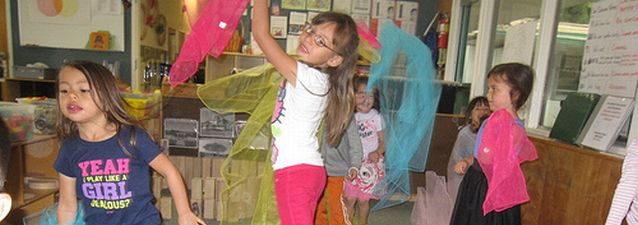Home >
VPA> Individualizing

Individualizing

- Provide the tip sheet “Out and About with Preschoolers: Make Some Music" from the Illinois State Department of Education. Invite participants to read the section titled, "Action songs bring movement and music together." Ask participants what movement songs and chants they remember from their childhood. Together as group, actively sing/do that song then brainstorm with teachers what kind of suggestions they can make for students to creatively change lyrics or movements to the song. One example is, “I caught a baby bumble bee” can be altered to “I caught a baby butterfly” etc.
- Ask staff members to consider the children they worry about reaching potential and feeling successful. Discuss that these worries sometimes come from seeing a lack of confidence, lack of peer relationships, or from a noticeable disability that has the potential to limit participation without accommodations. Pose the question, “What if by actively supporting visual and performing arts, you could address your worry? What if planning activities would help to combat some of these problems?" Show the video “Inclusive Arts” to a small group of staff members. Allow for ample wait time while processing the video together: What did you see? Did any of the children particularly resonate with you or remind you of other children? Consider the multitude of influence VPA can have on children’s development and what teachers do in the classroom to ensure children have these experiences.
NOTE: This is particularly broad in order to allow for teachers to derive their own reflective meaning. This may be a good thing to do at the beginning of the meeting to set the tone and then add another more specific strategy with an action plan at the end of the meeting. Depending on the group, spread this out over two days of support.
- Invite staff to read the Young Children article, "Theater Live Music and Dance Conversations about Young Audiences." Together re-read the section beginning with the question, "Many children theater performances contain some element of conflict. Why Is this?" Ask teachers about using theater as a way to facilitate the development of conflict resolution skills. Guide teachers to think about what types of conflict happen frequently in the classroom. Brainstorm short performances that may address similar conflict.
- Give teachers the Songs, Rhymes, and Fingerplays handout. Have teachers share additional songs and chants they use in multiple languages and how they use them with children.

